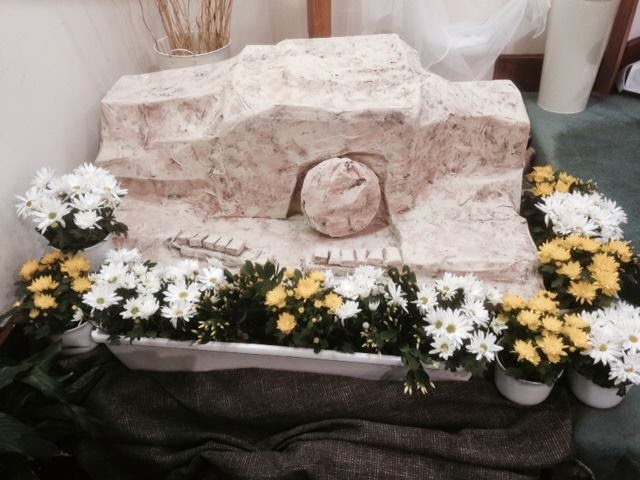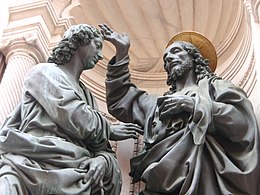1941
Andy [Facebook]. Easter world in its tomb
Thank you Andy.
Your beautiful sculpted of the tomb and moved stone open up or hearts to Dawn of Resurrection.
It is the revelation to prayer.
You may follow below the meditation from Gabrielle Bossis, YOU AND i.
Yours ...
fr. Donald
+ + + + + + + + + +
Easter - All along the road to the
Cathedral I was saying, "Hail, my resurrected Christ!"
"As far as your heart is concerned, may the world be in its tomb. May your
Christ alone live!"
At the offertory:
"Through my rising from the dead, offer the resurrection
of your own body at the general resurrection. Offer the resurrection of each
member of your family, of all those who have passed before
you and those who will outlive you, and of all the people you have ever
known - all of them. Let them be
like a procession around my resurrection for the glory of God the
Father."
April 20 - Le Fresne. Holy Hour.
"Don't you come to Me with more confidence than
to any friend on earth? Aren't you at home in My heart?
It should be that way too, since for each soul, I am the unique, the
incomparable One. - Offer this communion between us to the Father in union with
the intercourse between the three divine persons. After you receive the Eucharist, offer Him not only My body,
but the perfections of My soul:
My power and My tenderness; My virtues too – the ones you have loved the
best – in order to help you to overcome your weaknesses and failures. You
understand – in Me you can find everything: all the love you need to help you.
So don’t be afraid of making use of the One who loves you so. Unfold your
trust like silk to clothe your request, and you will vanquish Me. My
heart is easily taken captive by My little children. Any humble tenderness
disarms Me. Yes, before you fall asleep, lovingly and humbly confess the day’s
faults and failings. What gain for you! And what eagerness to restore in the
heart of your loving Saviour. You remember, when Mary Magdalene had told Me of
her sins, she stopped to ask, ‘After that, can I be forgiven?’ I assured her
and she went on. But once again she stopped and asked, ‘For this too, may I still
hope to be forgiven?’ ‘Yes’, I assured her. Then when all her past had
been laid at My feet, she wept from pure love - gratitude, understanding
My infinite compassion. Understanding a little, that is. For it is not in you
to grasp the infinite. Love to be blind, since it is I who am leading you if
you really want to put your hand in Mine. Don’t you think fathers are happy
when there little girls leave everything to them in simple tenderness?”
| Paschal Candle - altar cloister daffodils. |
"I am the One who makes whole. So give Me your wretchedness. Show it to Me with your two
hands like a beggar. I said to the apostles, 'It is I; don't be afraid,'
Such gentle, loving words! And I say them over again to you. You
remember how only Moses could approach God on Sinai. If anyone else crossed the
borderline at the foot of the mountain he was struck dead. And now that the Son
of God has come to die for His brothers, He says to you, 'Draw near. Come,
love Me without fear, for I love you'."












